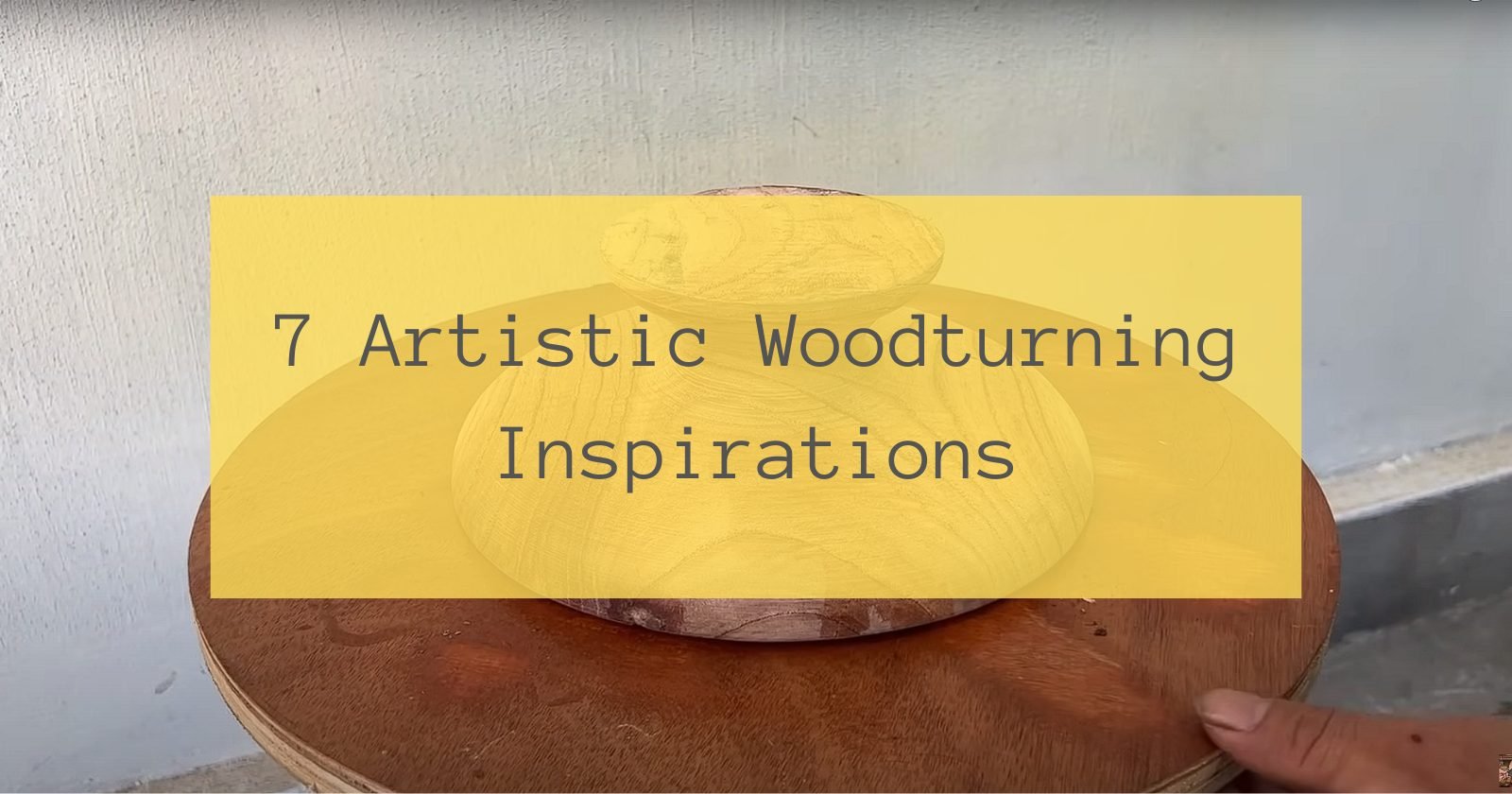Table of Contents
Woodturning is an art form that transforms simple pieces of wood into intricate, beautiful objects, merging craftsmanship with creativity. Artistic woodturning is a captivating craft that combines creativity, woodworking skills, and design. Here’s a more elaborate exploration of the inspired crafts mentioned earlier, showcasing the depth and versatility of woodturning.
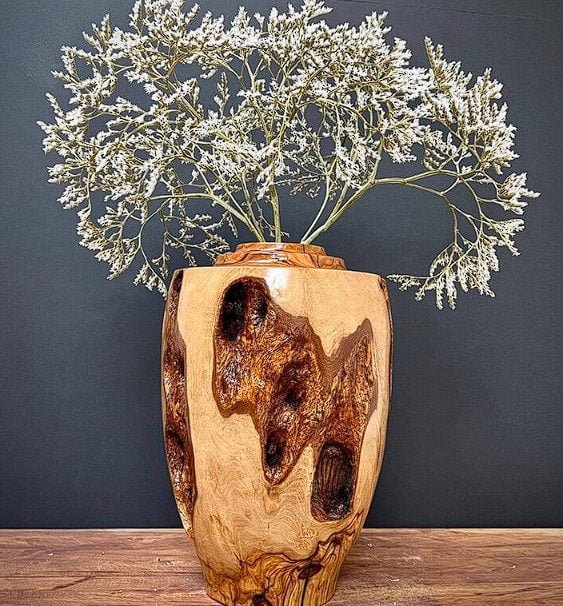
Image Source: Etsy
1. Sculptural Vases with Natural Edges
These vases are not just containers but statements of nature’s untouched beauty, brought to life on the woodturner’s lathe. The process involves selecting a wood with distinct natural edges – perhaps where the bark meets the heartwood – and carefully turning the piece to preserve and highlight these features. The result is a collection of vases that dialogue between the wood’s raw beauty and the turner’s vision. Each vase, with its unique contours and patterns, tells a story of its origin tree, making it a captivating decorative piece that adds a touch of organic elegance to any setting.

2. Segmented Wooden Bowls
Segmented turning is a complex technique that combines precision woodworking with artistic assembly. Woodturners create these bowls by first cutting and gluing pieces of different woods into a designed pattern. The assembled block is then mounted on a lathe and turned into a bowl. The geometric patterns, color contrasts, and seamless integration of the segments make each bowl a masterpiece of design and craftsmanship. These bowls are as much a testament to the turner’s planning and precision as they are to their artistic sensibility.
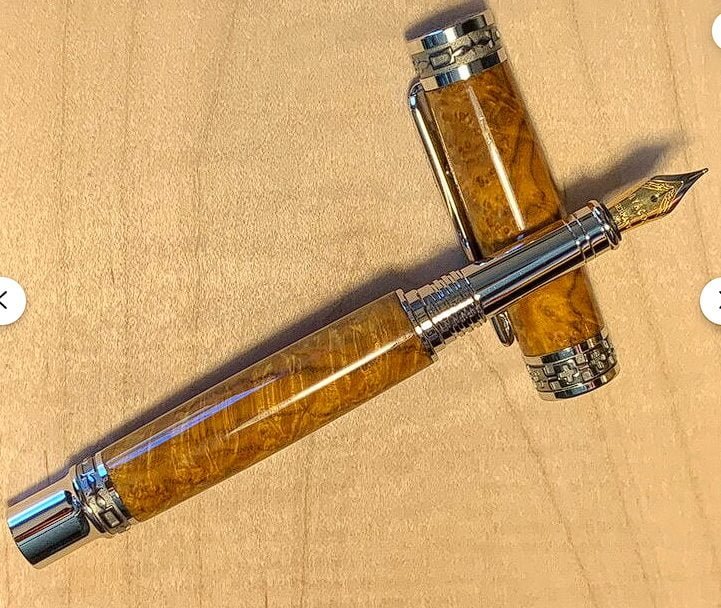
Image Source: Etsy
3. Handcrafted Wooden Pens
Turning pens on a lathe allows for creating personalized and highly detailed writing instruments. The selection of wood (or combination with other materials) is crucial, as it determines the pen’s final appearance and texture. Exotic woods with deep grains and vibrant colors can make each pen a work of art in its own right. The turning process shapes the pen to a comfortable and aesthetic form, while additional details like metal fittings and mechanisms are carefully chosen to complement the wood’s natural beauty. These pens become cherished objects, embodying both utility and artistry.
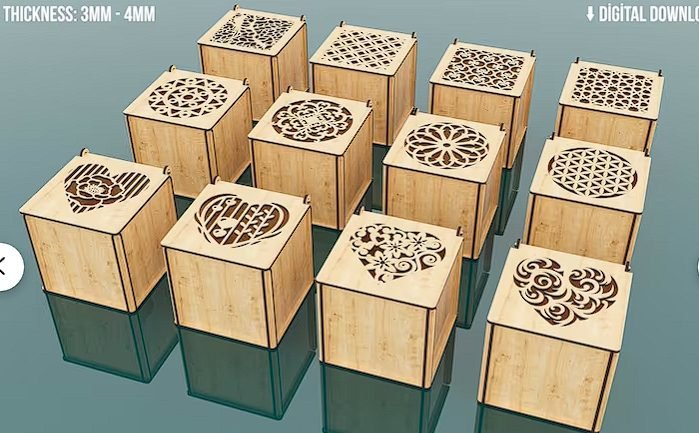
Image Source: Etsy
4. Ornamental Lidded Boxes
These small, intricately turned boxes are marvels of craftsmanship. Woodturners explore various forms, from simple cylinders to complex, multi-sided shapes. The challenge lies in creating a snugly fitting lid that complements the box’s overall design, often topped with an ornately turned finial. The boxes might feature intricate patterns, inlays, or carvings, adding layers of detail that invite close inspection. Such boxes are not merely containers but treasures, holding the story of their making within them.
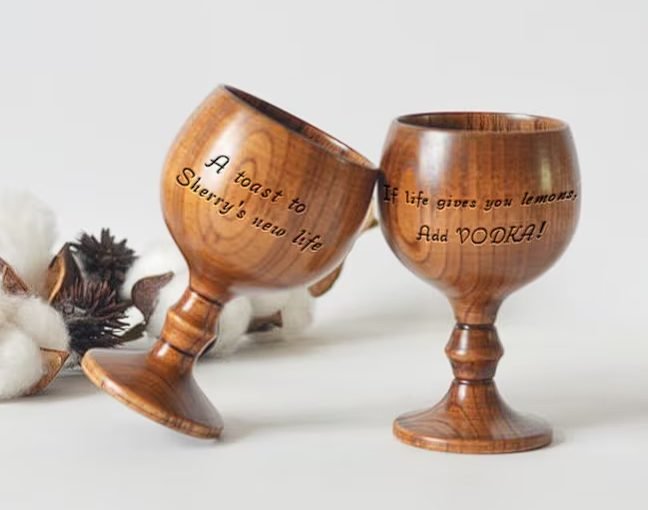
Image Source: Etsy
5. Wooden Goblets and Chalices
Turning goblets and chalices requires a delicate touch and a keen eye for form and proportion. The thin-walled vessels exemplify the turner’s skill, as they must be beautiful and structurally sound. The designs may draw inspiration from historical or fantasy themes, with each piece potentially serving as a functional drinkware or a ceremonial object. The finish applied to these pieces is critical, as it must enhance the wood’s natural beauty while ensuring the item is safe for use, should one choose to do so.
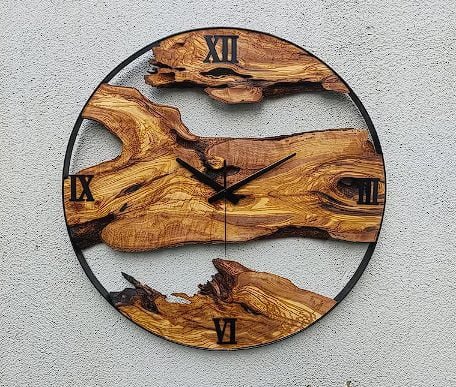
Image Source: Etsy
6. Artistic Wall Clocks
Creating wall clocks involves turning wood into a canvas and a frame for the passage of time. The clock face itself can showcase the wood’s natural grain, enhanced by the turner’s choice of finish. Beyond the simple circle, turners can experiment with shapes, add elements like inlaid numbers or motifs, carve textures, or even incorporate other materials for a mixed-media effect. These clocks are functional art pieces, adding a warm, personalized touch to any room.
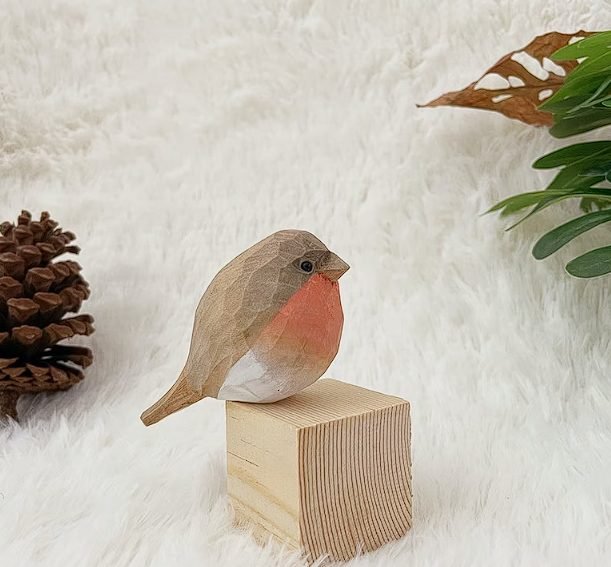
Image Source: Etsy
7. Turned Wooden Sculptures
Here, woodturning crosses entirely into the realm of fine art. Turners create sculptures that may abstractly represent forms found in nature, explore geometric or organic shapes, or convey symbolic meanings. These pieces often push the technical boundaries of woodturning, challenging the artist to innovate with techniques and forms. Unlike functional wood-turned items, these sculptures are meant to provoke thought, evoke emotion, and be appreciated purely for their aesthetic value and the skill evident in their creation.
Each of these inspired crafts demonstrates the potential of woodturning to blend function with beauty and tradition with innovation. They invite both makers and admirers to see wood as a material and a medium for expressing the boundless possibilities of human creativity and craftsmanship.
Exploring Artistic Woodturning Techniques
Spindle Turning
Spindle turning is a woodturning technique used to create items such as table legs, chair spindles, and candlesticks. It involves rotating a piece of wood on its axis while cutting tools shape it into various forms. This technique often requires a lathe with specific attachments for holding and turning the wood.
Spindle turning allows for creating symmetrical shapes along the length of the wood. The process involves using gouges, parting tools, skew chisels, and wood to achieve smooth curves and intricate details. Wood artisans can produce pieces with consistent dimensions and designs by mastering spindle turning.
Faceplate Turning
Faceplate turning is another essential artistic woodturning technique that involves mounting a piece of wood onto a lathe’s faceplate or chuck. This method enables artisans to create wood bowls, platters, vases, and other rounded objects by shaping the exterior surfaces using specialized chisels.
When using faceplate turning, artisans utilize cutting techniques such as shearing cuts and scraping cuts to form different textures on their turned wooden objects. They may also incorporate wood and decorative elements like beads or coves into their designs for added visual appeal.
Finding Inspiration for Your Woodturning Projects
Nature
Nature is a boundless wellspring of artistic woodturning inspirations. The patterns and textures found in the natural world, such as the intricate grain of a tree’s bark or the graceful curves of a seashell made of wood, can ignite your imagination. For example, observing the swirling pattern on a piece of driftwood might inspire you to create an elegantly tapered vase with similar flowing lines.
Taking leisurely walks through forests or along beaches allows me to observe nature’s details up close. These experiences often lead me to discover new shapes and forms to incorporate into my wood-turned projects.
Architecture
Architectural marvels also serve as captivating sources of inspiration for artistic woodturning. The sleek lines of modern skyscrapers or the ornate embellishments adorning historical buildings can provide ideas for creating both contemporary and traditional-turned pieces. You might draw inspiration from the geometric precision of skyscraper designs to craft a series of symmetrical wooden bowls with clean, angular profiles.
When I visit different cities, I try to explore their architectural wonders. This exposure helps me appreciate diverse design styles and influences my approach when conceptualizing new wood-turning projects.
Other Art Forms
Exploring various art forms, such as painting, sculpture, and pottery, can fuel your creativity in woodturning. Studying paintings by renowned artists may inspire you to incorporate bold color schemes into your turned creations or experiment with abstract forms reminiscent of sculptural masterpieces.
Visiting art galleries has been an enriching experience; it allows me to immerse myself in different artistic expressions and gain fresh perspectives that influence my wood-turning endeavors.
Creative and Unconventional Woodturning Inspirations
Everyday Objects
Artistic woodturning inspirations can be found in the most ordinary items around you. A simple vase, a unique chair leg, or a kitchen utensil can spark creativity. Look at the shapes and textures of these objects to draw ideas for your next woodturned masterpiece. For example, the curves of a vintage teapot could inspire the design of an elegant wooden bowl.
Exploring artistic woodturning inspirations from everyday objects allows you to infuse familiarity into your creations. By observing and analyzing everyday items, you’ll develop a keen eye for detail and form to elevate your wood-turned pieces. This approach also enables you to bring elements of daily life into your art, making it relatable and engaging for viewers.
Frequently Asked Questions
What are some unconventional sources of inspiration for artistic woodturning?
Unconventional sources of inspiration for artistic woodturning can include natural phenomena like the patterns in a flowing river or the texture of a weathered rock. Architectural designs, cultural symbols, and even music can be unique inspirations for your wood-turning projects.
How can I express my artistry through woodturning?
You can express your artistry through woodturning by experimenting with different shapes, textures, and finishes in your creations. Incorporating storytelling elements or infusing personal experiences into your work can add depth and meaning to your artistic expression.
What are some pioneering innovations in the field of woodturning?
Pioneering innovations in woodturning include the development of specialized tools such as hollowing systems and texturing tools. Advancements in materials like hybrid blanks and resin casting have also expanded the creative possibilities for artists practicing this craft.
Where can I find inspiration for my woodturning projects?
Inspiration for woodturning projects can be found in nature, architecture, history, culture, and everyday objects. Visiting art galleries and museums and attending woodworking exhibitions can expose you to diverse forms of inspiration that may influence your creative process.
How do I push boundaries with artistic turning concepts?
Pushing boundaries with artistic turning concepts involves experimenting with unconventional materials such as acrylics or incorporating non-traditional techniques like multi-axis turning. Embracing asymmetry or exploring abstract forms are other ways to challenge traditional norms within artistic woodturning.
